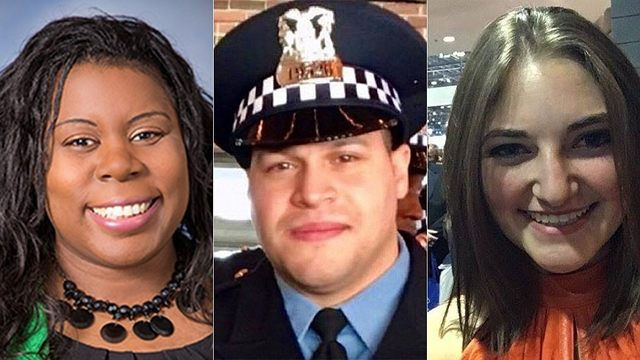The Crisis of Intimate Partner Violence
- Juan Martinez
- Nov 21, 2018
- 3 min read
Yesterday, on the South Side of Chicago, Juan Lopez and Dr. Tamara O'Neal stood outside Mercy Hospital arguing. The confrontation turned violent when Lopez reportedly shot Dr. O'Neal three times in the chest, then stood over her and shot her three more times.

He then ran inside the hospital where he shot and killed Pharmacy Resident Dayna Less as she exited an elevator. And then shot and killed police officer Samuel Jimenez who had rushed into the hospital lobby. His fellow officers eventually killed Lopez.
The killer was motivated by the September breakup of his engagement to Dr. O'Neal:
"She got on the phone and she was trying to call the police," the witness told WGN. "She asked us not to leave her alone because he is going to kill her."
Lopez then approached O'Neal and demanded he give her a ring, the witness claimed. When she told the man she didn't have it, the man reemerged with a gun, according to the witness.
What happened at Mercy Hospital was not an anomaly.
More than 10 million men and women in the U.S. are subjected to domestic violence every year. Of those, 85% of the victims are women. Incredibly, nearly 20 people per minute are physically abused by an intimate partner.
The impact of this violence goes even further, however. According to the National Network to End Domestic Violence, approximately five million children are exposed to domestic violence every year. These children are more likely to attempt suicide, abuse drugs and alcohol, run away from home, engage in teenage prostitution, and commit sexual assault crimes.
Worse still, men who are exposed to domestic violence as children are three to four times more likely to perpetrate intimate partner violence themselves as adults. And these are the cases we know about. Most victims do not report abuse.
Here in New York City, intimate partner violence counts for over half of all family-related homicides with the New York Police Department responding to nearly 230,000 domestic incidents each year.

Mass shootings tend to drive the gun debate in our country, but the use of guns in suicides and domestic violence is statistically more of a crisis. Women in the U.S. are 16 times more likely to be shot and killed than are women in other developed nations. And the mere presence of a gun in a domestic violence situation makes it five times more likely that the woman will be killed.
There are also economic tolls. According to the Centers for Disease Control and Prevention, medical, mental health and loss of productivity costs related to domestic violence are estimated at over $8 billion each year. The National Center for Injury Prevention reports that domestic violence leads to 13.5 million days of lost work every year.
I could go on and on. The statistics are endless.
Thankfully, there are numerous resources available for victims and their children. Even so, the seeds of domestic violence run deep. We need stronger laws (PDF download) and better protections for the targets of domestic violence. And we all have a role to play in ending this violence once and for all -- not just in October during Domestic Violence Awareness Month, but every day.
The National Domestic Violence Hotline, which received its first call on February 21, 1996, is an invaluable outlet for many victims. The toll-free number is 1−800−799−7233. If a person is unable to call, they can visit the Hotline's website to chat online 24/7. All communication is confidential.
Please share this with anyone you think might be in need.
.jpg)
Comments